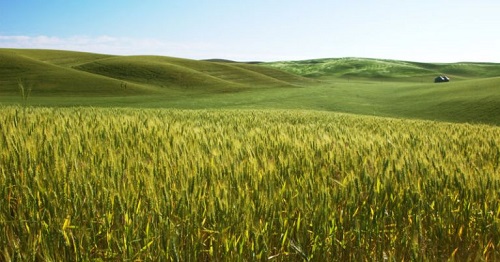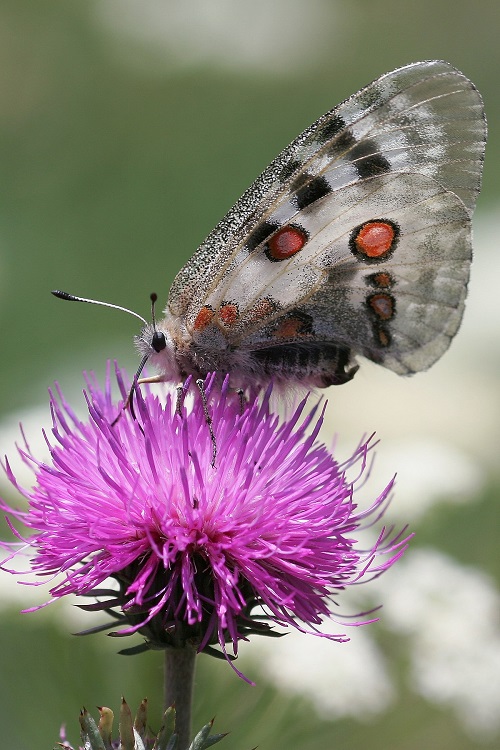
About 66 million years ago, the age of dinosaurs came to an end when a massive asteroid hit the Earth. An enormous shockwave and raging wildfires caused thick clouds of smoke and dust to obscure the sun, changing the global climate and killing off around three quarters of all existing life. We are aware of at least several comparable or possibly even greater mass extinction events that happened in the history of our planet. Unfortunately, it seems that we’re about to experience another one. Dr Justyna Kierat and Dr Piotr Łukasik from the JU Faculty of Biology have taken a closer look at the chilling issue of mass animal die offs.
Life on Earth is infinitely malleable. Over millions of years, some species of plants and animals die, while others emerge in the process of evolution. This is a completely normal phenomenon, but the key issue here is the scale and pace of these changes. During extinction events, old species are snuffed out much faster than new ones can appear. In every ecosystem, each species plays a certain role, and its disappearance will be more or less noticeable to others. In many cases, a certain role is played by multiple actors, so if one of them drops out, another will fill its place. However, there are some actors that are much more difficult to replace, and their disappearance will result in a cascade of changes that may end up wiping out many others. American biologist Paul Ehrlich compared loss of individual species to randomly taking out rivets from a flying plane: although the machine will be able to continue its flight for some time, it will inevitably lead to a disaster.
When we think of endangered species, most of us come up with images of large vertebrates: tigers, elephants, bison or chimpanzees. This is understandable: the population of many of these animals is dangerously low, and some of them have already ceased to exist. For example, until the mid-19th century, the passenger pigeon was so numerous that nobody ever thought it could die out. Sadly, due to excessive hunting and habitat destruction, there wasn’t a single passenger pigeon living in the wild in the early 20th century. Many existing vertebrates are facing the same fate right now, but research suggests that there is another group of animals we should pay attention to: the insects.
Nature’s underdogs
Many people don’t think much of ‘bugs’. It’s quite surprising, since they’re an amazingly diverse, numerous and ubiquitous group of creatures, which live in nearly all terrestrial ecosystems. Some of them, like butterflies, are beautiful and captivating, but most are rather plain and unassuming. We consider quite a number of them as pests and put effort into eradicating them. Insects play a variety of key roles in the environment: they’re food for other animals, they regulate the population of other species (e.g. plants or pests), pollinate flora, participate in the decomposition of dead organic matter. Simply put, without insects, life as we know it would not exist.
The diversity and sheer number of insects as well as their rapid reproduction may at some superficial level suggest that they’re resistant to changes in the environment, in particular because we find the unwanted ones so hard to exterminate. That is why, until recently, no one seriously thought that they may go extinct – and we’re not talking about a few species, but entire orders. Though a few hardier insects, such as cockroaches, can subsist on almost anything, most of them are specialists that require a particular set of environmental features, are dependent on other actors, and are highly vulnerable to change. It is, therefore, difficult to predict long-term trends in their populations. Variations of population in every habitat depend on its type and season, and the activity of insects is highly affected by the weather, so it may sometimes be hard to notice a decrease in number. There is, however, one big change that is visible to almost anyone: most people seem to agree that much fewer insects get squashed on the windshields of their cars than they used to. Although this could easily be dismissed as anecdotal evidence, latest studies seem to corroborate these observations. Last year, two research papers on the dramatic decrease in insect population in Germany and Puerto Rico between now and a few decades ago have shaken the entire scientific community [1,2]. A review published in March 2020 contained similarly pessimistic conclusions about the numbers of animals in various taxonomic groups around the world [3]. In all cases, though, there was a limited amount of samples to be analysed, leaving some space for different interpretations.

A paper published in Nature [4] in autumn 2019 provided biologists with great amount of data they could use to determine the current trends in population. It describes arthropod inventories taken in 140 forests and 150 grasslands in Germany taken annually or triennially between 2008 and 2017. The sample comprised over a million specimens from 2,700 different species. The conclusions of the paper are worrying, to say the least. In the span of nine years, the numbers of arthropods in the grasslands have shrunk by 78%, their combined biomass – by 67%, and the number of species – by 34%. In the forests, investigated every year, the number of arthropods remained relatively stable, but their biomass and number of species decreased by 41% and 36%, respectively. These huge changes undoubtedly affect many aspects of life in those ecosystems. The decrease in numbers were the most visible in species that were already seen as rare when the project began, and some of them are likely going to become extinct. Conversely, species that noted an increase in numbers were pests and invasive species (i.e. insects from other ecosystems that threaten the native population by outcompeting them or carrying diseases).
The issue of monoculture

What are the causes of such a drastic decrease in the number of insects and other invertebrates? Globally, the most impactful factor is the transformation of their natural habitats into farms and urban areas. Another one is pollution, mainly the result of spraying pesticides. Competition from the already mentioned invasive species is also a major issue, as is global warming, which causes sudden and extreme instances of heat waves, droughts, wildfires and floods.
All of the above factors have their roots in industrial agriculture. Scientists have proved [4] that the immediate surroundings of an investigated site have a major impact in the disappearance of arthropods, though they are not providing any data that would determine whether the cause lies in recent intensification of agricultural activities or in long-term effects of farming. At the same time, it’s worth noting insects are not dying off only in close proximity of farms – a massive drop of insect numbers (up to 75%) has also been observed in protected areas, such as nature reserves that are far removed from agriculture [2].
Last chance
Is there any way to stop the extinction of insects, and if so, how do we do it? It seems that, given favourable conditions, they could rapidly expand their population due to their fast breeding. However, this will require a broad scope of global and systemic actions: radical changes in land management, introducing sustainable agriculture, and switching to green energy. This, in turn, is dependent upon decisive measures that need to be undertaken by governments and local authorities to protect the environment, restrict the use of pesticides, and reduce our carbon footprint. Unfortunately, these issues are not a priority for most political leaders, but the society can change that through conscious and active participation in the democratic process. We need to remember that there’s very little time left to act.
Although small scale actions have much less impact than global initiatives, they are by no means meaningless. We should fight for the preservation of parks and other green areas in our neighbourhoods, in particular those that support native flora and fauna. We should also pay attention to biodiversity of plants and animals, as they naturally depend on one another in order to thrive. We shouldn’t use chemicals that may negatively impact the health of insects and raise their mortality. In the face of mass extinction facing these fascinating creatures, every bit of help is priceless.
If you’d like to learn more, please read the report prepared by Prof. Dave Goulson (Somerset Wildlife Trust), which discusses this issue in greater detail.
Literature:
[1] Lister i Garcia 2018
[2] Hallmann 2017
[3] Sánchez-Bayo i Wyckhuys 2019
[4] Seibold i in. 2019
[5] Forister i in. 2019
Original text: www.nauka.uj.edu.pl





